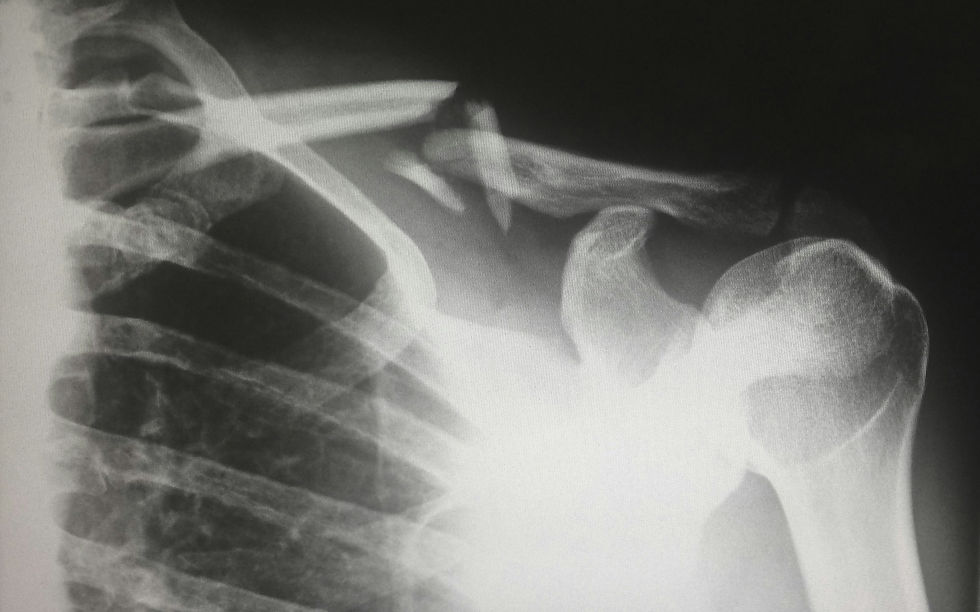Out in Left (Handed) Field
- marketingc8
- Mar 29, 2022
- 3 min read
Out of ten people in the world today, nine are right-handed. The remaining one that is not like the other—that nonconformist, the stranger in the group—is left-handed.
Handedness, the preference of one side of the body over the other, is rare in the animal kingdom. Most wild kangaroos “tend to favor their left hands during common tasks like feeding and grooming.” Yet, aside from us and our furry friends in the outback, there are no animals known to exhibit handedness—not even our closest primate relatives.
So, what’s behind this quirky left-or-right human tendency? And why can’t we be both?

Note the difference in size between the left and right upper arm bones of this Neanderthal fossil. Source: NBC News.
First, there’s the “lateralization” argument. Lateralization is the view that different areas of the human brain are responsible for different processes. (Contrast lateralization with the “holistic theory,” which argues that all parts of the brain are involved in thought and action.)
The left hemisphere of the brain, sometimes called the “logical” side, is associated with reading, writing, and calculations. The right hemisphere of the brain deals more with images than with words, and is connected to visualization, spatial coordination, and navigation. Of course, the two sides talk to each other, bound by a bundle of nerve fibers called the corpus callosum.
Here's the catch: the left brain controls the right hand. Brain scans reveal that almost 95 percent of right-handers are “left hemisphere dominant,” whereas only 70 percent of lefties are. In those same scans, lefties’ brains showed more back-and-forth communication between hemispheres.
Then, there’s the evolutionary argument. Most paintings of hands in ancient cave art are decidedly “left,” meaning the artist(s) placed their left hand on the wall and used their right to paint around it. Neanderthal fossils, such as the one depicted above, show right upper arm bones that are thicker than their left counterparts.
And then there are neanderthal teeth that have diagonal incisions consistent with right-handedness. (Holding one end of an animal hide by their teeth, they would pull the other end taut with their left hand and clean with their right. Sometimes, they missed.)

Look at those (left) hands, from the Lascaux Cave, in southwestern France.
And finally, there’s the cultural argument: from a very young age, we are raised in a society designed for right-handed people. We write towards the right, meaning that left hands, as they travel across the page, must endure ink-smudged letters. Try using a tape measurer with your left hand: the numbers are upside down. Cup holders in cars are almost always on the right side. Those corded pens at the bank? Same. Jimi Hendrix famously played his guitar upside down, because, well, they just didn’t make guitars for lefties. And if that wasn’t enough, the flap covering pant zippers blocks easy access from the left side.
Despite (or because of) the outlier status, it could be argued that lefties have a competitive advantage in sports. Left-handers are overrepresented and win more in sports such as boxing and mixed martial arts, leading some scientists to conclude that “left-handedness is associated with greater fighting success in humans.” Three of the top-10 winners of Tennis Grand Slams are left-handed. Says a two-time Wimbledon champion: “Everybody doesn’t like to play lefties because it takes more thinking.”
Up to 35 percent of players in Major League Baseball are left-handed. And almost half of the position players enshrined in the Hall of Fame are, too: think Babe Ruth, Ty Cobb, David Ortiz. Left-handed batters have a more direct line of eyesight at a ball coming from a right-handed pitcher. (It has become common in modern baseball for managers to bring in a left-handed pitcher against a left-handed batter for this very reason.)
Interestingly, the competitive advantage fades in sports that do not require direct interaction with the opponent, such as golf, bowling, and darts.
So, are lefties better athletes than their counterparts? Or are right-handers just worse at anticipating left-handed movement? It’s hard to know.
Handedness, there to be seen in our very anatomy, serves as a reminder that yes, we are a weird, unique species. And sometimes, being different is a great quality to have.
.
.
.
.




Comments